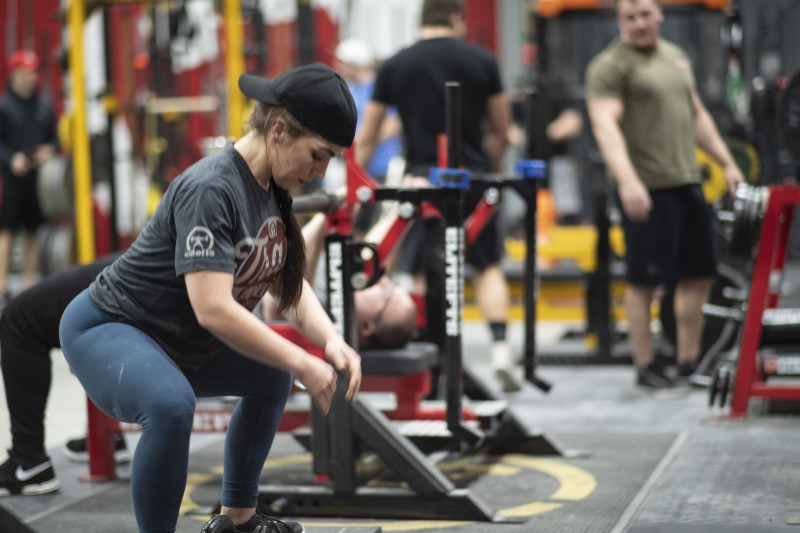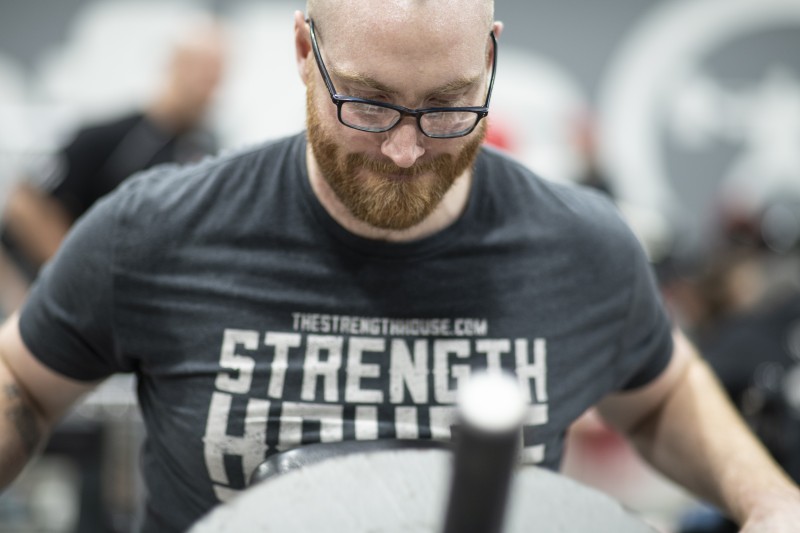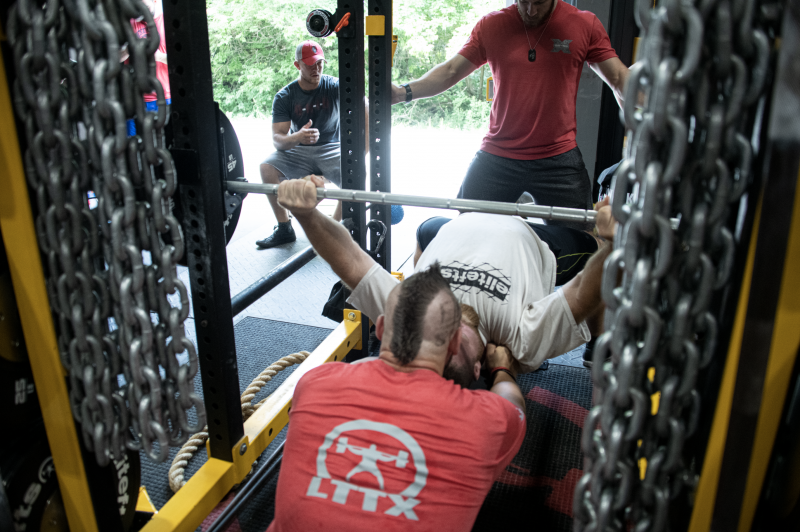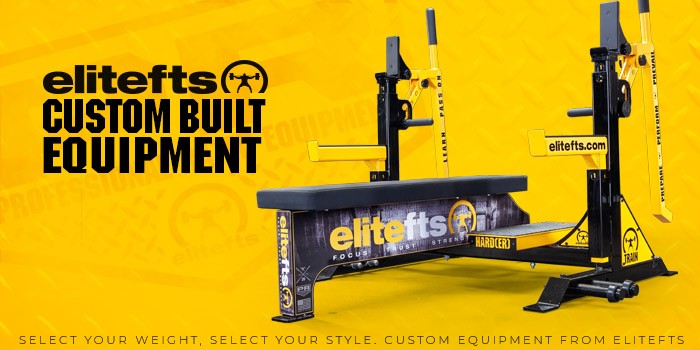
When purchasing strength equipment for recreational fitness centers or commercial gym facilities, there are a number of considerations I believe are important in order to make decisions that won’t come back to bite you (in multiple different ways).
The thought process that you use when purchasing strength equipment is going to be different if you are purchasing equipment for a rec center versus a collegiate strength & conditioning facility, a private “box” style gym, the list goes on.
RECENT: 8 Weeks to a Strong(er) Overhead Press
I have been making strength equipment purchases in collegiate recreation facilities for over eight years now and have learned some valuable lessons that I think can be helpful if you are making purchases in a similar setting. Keep in mind that this is not an all-encompassing purchasing guide; there are other details that I won’t touch on (equipment footprint, financial planning, safety regulations for room layouts, etc). The five considerations below can, however, help you avoid some common mistakes that I have seen negatively impact facilities and programs in the past.
1. The Population You are Serving
When operating a recreation center, it is incredibly important to consider the demographics and needs of the population you serve. A common mistake is to make equipment purchases based on (1) what you personally want, or (2) what you assume your members want. Particularly if working on a college campus or in a community center, you will likely have a goal of attracting new members and under-served groups that do not currently use your facility. Doing this while continuing to support your current members’ needs is a delicate balance that requires getting honest feedback to determine your members' needs and wants.
This can be done through formal surveys and focus groups, as well as discussions with your staff that interact with members on a day-to-day basis. Once you gather data about members’ and non-members' needs and wants, you can measure that data across your expertise as a fitness professional and available resources to determine the best direction to take. You won’t make everyone happy with your final decisions, but you should be able to articulate why you purchased what you did and help people understand that their feedback was taken into consideration.

Part of this is also understanding the diverse experience levels of your members and making sure equipment is easy to use if they will not have supervision from a coach or personal trainer. I will touch on this more in the last point, but if I am looking at a piece of equipment and it is not intuitive enough for me as a fitness professional to easily adjust the machine, then how do I expect a member with zero fitness experience to figure it out?
2. Consideration for Changing Trends
Another common mistake when making equipment purchases is to purchase purely based on what is “hot” at the given moment without consideration for long-term impact as trends change. It can be completely okay to make a purchase to focus on a current trend, but you should then also be asking (1) how long is this trend expected to last? And (2) can this equipment be re-purposed for other uses if this trend fades away? The last thing you want to do is build a facility that will only fit a specific use and then spend hundreds of thousands of dollars on equipment that can only be used as long as a specific mode of exercise stays trendy. My recommendation is to center your purchases around sustainable/tried and true exercise activities, then ensure that purchases focused on newer trends can be repurposed or flexibly accommodate other activities. How short-term you can afford to think will also be determined by your financial capacity and how often equipment is budgeted to be replaced.
3. Track Record of Equipment Brand/Model
This one can come back to bite you big time if you make the wrong decision. Depending on the setting you work in, you may have equipment reps/vendors that your organization normally works with (or, in the case of a university, you may typically only work with vendors on state contract). Regardless, whenever you are looking to make purchases, you will likely get hit with a bunch of shiny new options from different companies. With strength equipment in particular, I think it is important to look at how long that company has been making and selling equipment, as well as how long that specific model has been in use (and who has used it). Even with reputable companies that make quality cardio equipment, they may start selling strength equipment, but that equipment may not carry the same quality that the equipment they have built their reputation on does. A new model of a piece of equipment can be a great purchase, but I think it is important to ask a couple key questions:
- What type of testing has this equipment gone through?
- Who else has purchased this equipment for their facility?
Particularly with the second question, you may be able to reach out to that facility and find out what their experience has been with that equipment. If no one else has purchased that equipment or have only had it for a month or two, you will need to make sure and do plenty of research to make sure you feel confident in that equipment before purchasing. Sometimes being the first person to buy something and put it to real-world use is not the best place to be. You do not want to be the guinea pig that finds out you bought a lemon and ends up dealing with a nightmare because the company did not put enough testing into the equipment. Getting feedback from other customers and looking at the track record for not only equipment models, but also customer service, parts availability, and warranty repairs is vital to make a sound purchase.

4. Durability and Necessary Routine Maintenance
With any facility that serves a large member population, your equipment will be taking a beating from a large volume of users (and often users that do not respect the equipment the same as, say, the member of a private training facility). This goes along with examining the track record of the equipment and ensuring that it has seen practical use or testing that ensures the durability of the equipment. Most equipment looks and functions great when it is brand new, but put it through a few thousand reps from members of different body types, strength levels, and experience levels, and see what it looks and functions like over time.
In doing your research, you will also want to make sure and understand what necessary preventative or routine maintenance the equipment will need, as well as how easily parts can be repaired or replaced when damaged. As any gym owner knows, having lots of “out of order” signs out is a quick way to send your members away to other facilities.
RELATED: Mount Baker High School Looks at What Really Matters
5. Equipment Design Considerations
There are countless different specific design considerations that vary between different machines, barbells, racks, etc. I will not be able to cover them all in this article, but my best recommendation is to make sure that you always consult someone who has extensive experience or knowledge with equipment and its use before making a purchase. If you are considering purchasing a squat rack, for instance, and you do not have extensive experience performing squats in a rack (or coaching diverse individuals doing the same), then make sure to consult someone who does for their input on the equipment. Someone with that experience will be able to point out design flaws more easily and help inform your decision.
There are a lot of companies with strength equipment that were obviously designed with people having no biomechanical knowledge of how movements are performed. In theory they may seem great, but then try to have some different people perform movements on the equipment and it is a different story. Equipment should be able to accommodate (and support) correct technique, as well as easy to use (particularly in the case of non-supervised members with little fitness experience).
As I mentioned, I will not be able to cover every single example of flawed design in this article, but here are a few examples that I see pop up frequently with mainstream strength equipment companies:
J-Cups that do not allow for a safe and effective barbell unrack
- This one drives me absolutely nuts and is a clear sign when a company lacks someone on the design team that understands correct technique. If the J-cup on a rack or bench is so deep that you cannot stay tight and unrack the barbell, then it presents a safety risk. Hole spacing on the rack also plays a factor in this. If the spacing is too far apart (combined with a deep J-cup), then you could be in a situation where you have to unrack way too low or else the cup is too steep to remove the barbell.

J-Cups and safeties that are not safe or easy to adjust
- Particularly in the case of the general member population, these two things on a rack or bench need to be easily adjustable in order to be safe. If the safety bar is complicated to set up and a member cannot tell if it is engaged or not, then there is risk for injury (and liability for you and your facility).
Bench pads or seats that aren’t at a height that allows proper setup
- Pad height may vary from different equipment, but it is important to make sure that when someone is using the equipment that the height allows for a safe setup to perform a movement. There are some bench presses, for example, where the pad is so low to the ground that there isn’t any way to keep the knees below hip level, which will cause the butt to come up off the bench or prevent someone from getting in a tight position.
Multi-function equipment that does not actually allow for maximizing of space
- A popular trend in recent years has been multi-function rigs that allow for multiple uses (barbell movements, chin-ups, landmine attachments, and a plethora of other accessory attachments and uses). These can be an excellent way to maximize space and provide a multi-function area for small group training, group classes, and team training. Where I think the mistake has been made with these rigs is when purchasers do not properly identify what population will be using them and if it will be informal or supervised training. I think in the case of supervised training (group classes, small group training, boot camps, etc.), that these rigs can be great to provide a variety of training possibilities during these sessions. For informal or open training, however, I think there are a few more variables you need to consider. If you have a large member population, or your space is typically maxed out (people waiting for equipment, etc.), then I think you have to consider how many people can actually be using the rig at any given time as well as if it can be done safely. For instance, if there are chin-up bars between every set of j-cups, can they actually be used while someone is squatting in the rack? If not, it is important to ask if it is worth having a rig setup for your open recreation area, or if it might be better to set up individual racks and platforms for barbell movements and a different area/equipment setup for bodyweight movements and accessories. I don’t think there’s a perfect right or wrong answer for this and it will vary from facility to facility. I would definitely consider what makes sense in theory versus practicality, however, when you are designing a fitness area and selecting equipment.
These are just a few of many considerations when purchasing strength equipment for your fitness center. Ultimately, your decisions will come down to personal preference and the needs of your individual facility. As I said previously, there is no perfect right or wrong way to do things. The biggest thing I would recommend is to ask plenty of questions, consider the needs of your members, and always think about the practicality of equipment you purchase. If you have additional questions about a particular aspect of this, feel free to drop a comment below or email me at joeschillero@gmail.com.
Header image credit: alchena © 123rf.com










